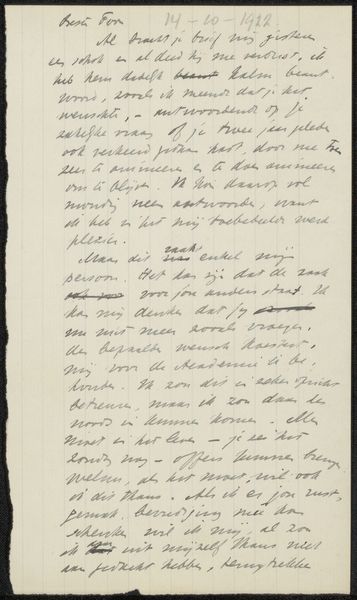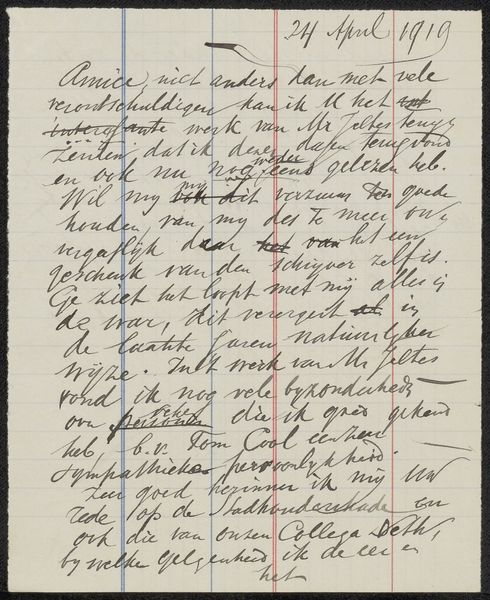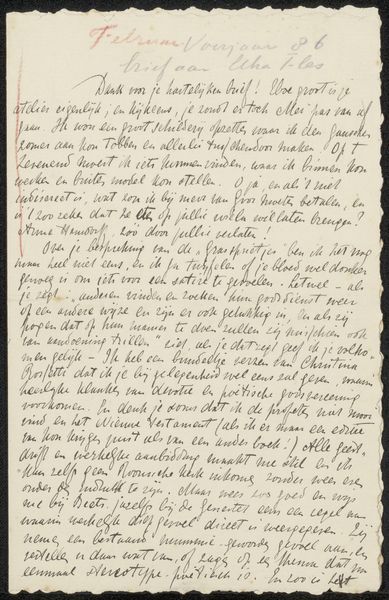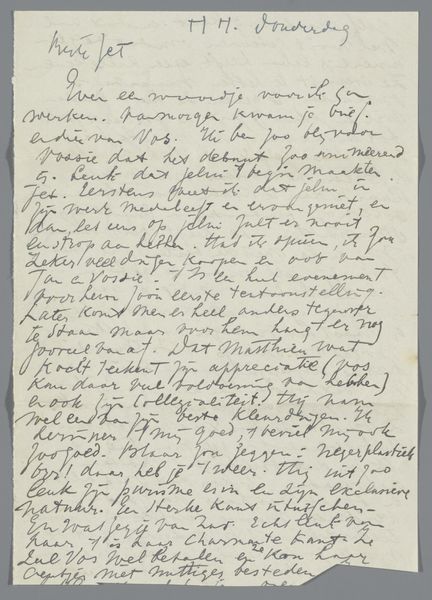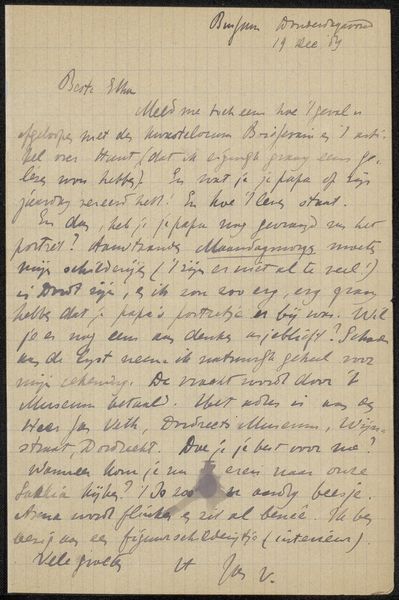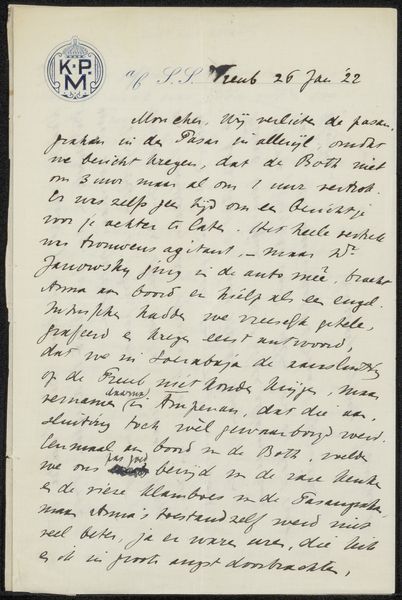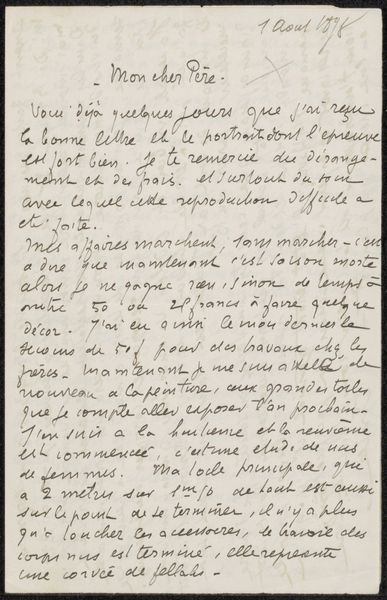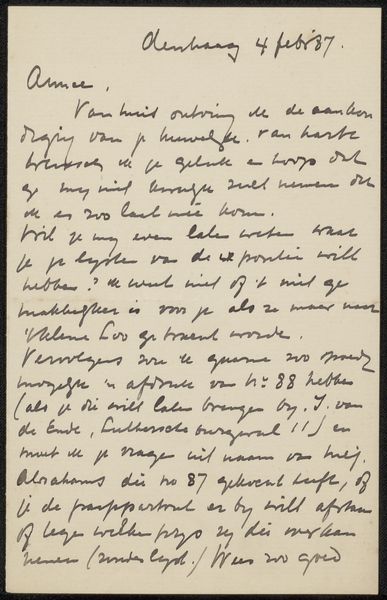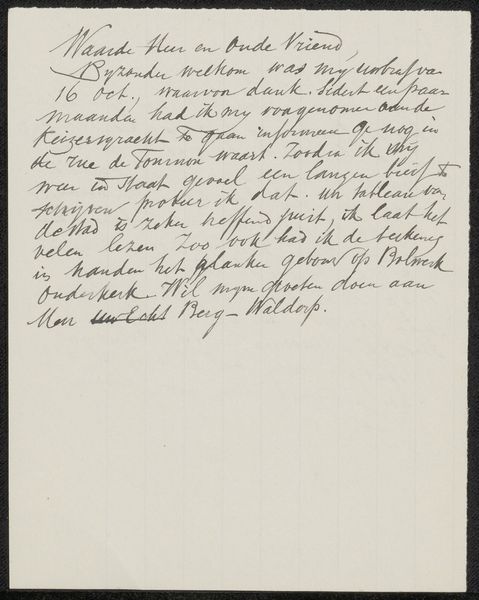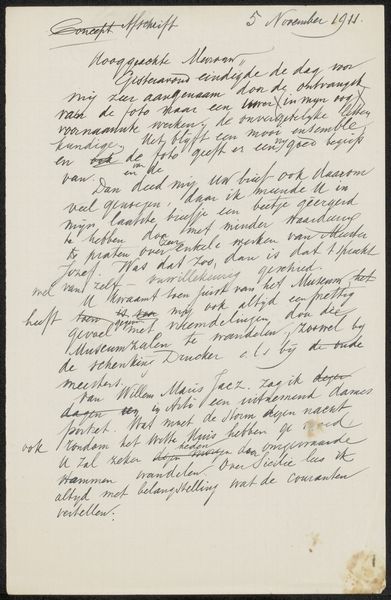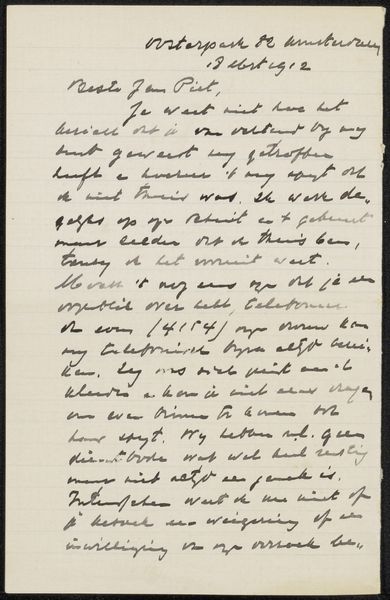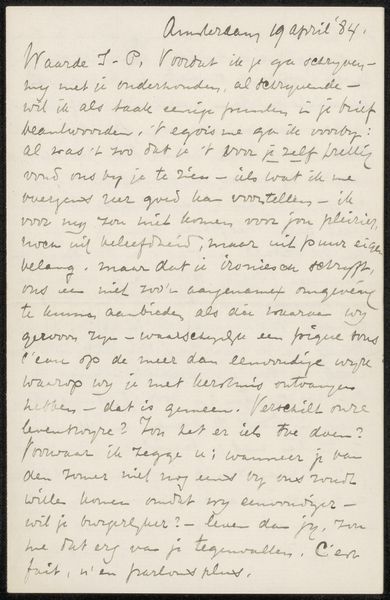
Brief aan Ina van Eibergen Santhagens-Waller c. 1878 - 1938
0:00
0:00
drawing, paper, ink, architecture
#
drawing
#
paper
#
ink
#
ink colored
#
architecture
#
calligraphy
Copyright: Rijks Museum: Open Domain
Curator: We’re looking at "Brief aan Ina van Eibergen Santhagens-Waller," a letter penned by Richard Nicolaüs Roland Holst sometime between 1878 and 1938. The piece is currently held in the Rijksmuseum’s collection. It’s ink on paper, quite small. Editor: Immediately, it's the intense texture of the writing that grabs me. The density of the script is so commanding; I can imagine Holst hunched over, meticulously filling every available space on the page. It's visually heavy, even a bit overwhelming. Curator: What you’re responding to, I think, speaks to Holst’s larger project. As an artist and a socialist, Holst saw art as a vehicle for social and spiritual transformation. He designed posters, pamphlets, and stained glass, all infused with symbolic imagery and meaning. This letter, addressed to a confidante, reveals that same drive for deeply felt connection, which, given the painstaking handwork and personalized script, must have meant more to both him and his recipient than we can immediately comprehend today. Editor: That reminds me of the care that would have been required in making the ink itself, then selecting the right quill, and ensuring a consistent flow. And the paper! Its own materiality, accepting the ink, carrying the weight of these confidences... it makes me appreciate how deliberate correspondence was. How material it all was. We dash off emails now without thinking, but this speaks of a different world. Curator: Absolutely. And beyond the medium itself, think about the very act of letter writing, with its power to both connect and conceal. We are looking at someone's interior life presented with crafted intentionality. Ina would probably have sought to unpack these layered thoughts and uncover hidden nuances and latent meanings to glean deeper understandings and perspectives that only her symbolic intuition would be able to discern. It reminds me how personal a simple piece of correspondence could really be, the way a tiny visual world in and of itself can be reflective of someone’s larger project, be that personal or ideological. Editor: Yes, it does add another layer of context beyond the surface reading of words. Thank you. It changes the mood entirely! Curator: Indeed.
Comments
No comments
Be the first to comment and join the conversation on the ultimate creative platform.
